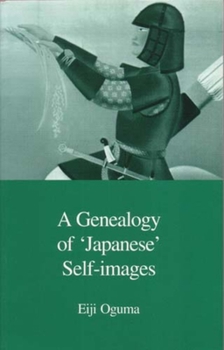A Genealogy of Japanese Self-Images
Select Format
Select Condition 
Book Overview
This book presents a counter-argument to the widely held view that the Japanese have believed that they are a homogeneous nation since the Meiji period. Eiji Oguma demonstrates that the myth of ethnic homogeneity was not established during the Meiji period, nor during the Pacific War, but only after the end of the war. The study covers a large range of areas, including archaeology, ancient history, linguistics, anthropology, ethnology, folk law, eugenics and philosophy, to obtain an overview of how a variety of authors dealt with the theme of ethnicity. It also examines how this myth of homogeneity arose and how the peoples of such Japanese colonies as Korea and Taiwan were viewed in the pre-war literature on ethnic identity. This is the first English translation of A Genealogy of "Japanese" Self-Images, which won the Suntory Culture Award in 1996.
Format:Paperback
Language:English
ISBN:1876843047
ISBN13:9781876843045
Release Date:May 2002
Publisher:Trans Pacific Press
Length:448 Pages
Weight:1.45 lbs.
Dimensions:1.0" x 5.4" x 8.4"
Customer Reviews
1 rating
(Pre) or (Post) War?
Published by Thriftbooks.com User , 15 years ago
According to Oguma, the self-image of Japan as a homogenous society is not the result of the prewar discourse of Japanese character. Deftly using Foucault to understand the phenomenon of Japanese identity as a discourse, Oguma argues that the contrary is true. He asserts that the prewar discourse used the language of nationalism, racism, and imperialism to validate Japan's imperial project and the resulting domination over others. This same discourse pegged Japan as a polyglot society. The implications of the polyglot model are many. At the center was the notion that the empire was one of ethnic and racial variety - this point is crucial. In effect, Oguma argues that the notion of Japanese homogeneity is really a postwar invention. A new sense of homogeneity rises from the idea that Japan is no longer an empire. Dropping, in effect, what was seen as the periphery - Taiwan (Formosa), Korea, and Manchuria, etc. - the shrinking of the empire to the core island forced the Japanese to re-evaluate their position and as a result its identity. As a former polyglot society and its empire as one of ethnic variety, it is conversely, the postwar discourse on the new state, Oguma asserts, that invented a peace loving, singular nation as the basis of the contemporary Japanese identity. Most of the tome is focused on the explanation of the complexity of Japan's prewar identity discourse. Oguma's A Genealogy of `Japanese' Self-images is now required reading for Japanese scholars of Nihonjinron history as well as high school readers.





